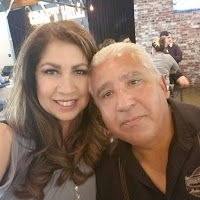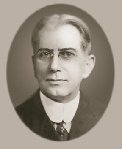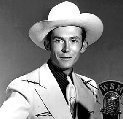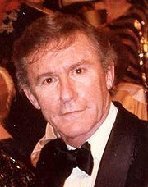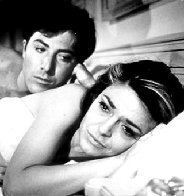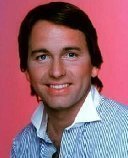
Bottled water is drinking water (e.g., well water, distilled water, mineral water, or spring water) packaged in plastic or glass water bottles. Bottled water may be carbonated or not. Sizes range from small single serving bottles to large carboys for water coolers.
History
Although vessels to bottle and transport water were part of the earliest human civilizations, bottling water began in the United Kingdom with the first water bottling at the Holy Well in 1622. The demand for bottled water was fueled in large part by the resurgence in spa-going and water therapy among Europeans and American colonists in the 17th and 18th centuries. 'Bristol Water' taken from the spa at Hotwells was one of the first drinking waters to be bottled and marketed widely. Daniel Defoe noted in 1724 that there were over 15 glasshouses in Bristol, "which are more than in London...and vast numbers of bottles are used for sending the water of the Hotwell not only over England but all over the world." The first commercially distributed water in America was bottled and sold by Jackson's Spa in Boston in 1767. Early drinkers of bottled spa waters believed that the water at these mineral springs had therapeutic properties and that bathing in or drinking the water could help treat many common ailments.
The popularity of bottled mineral waters quickly led to a market for imitation products. Carbonated waters developed to reproduce the natural effervescence of spring-bottled water, and in 1809 Joseph Hawkins was issued the first U.S. patent for "imitation" mineral water. Technological innovation in the 19th century led to cheaper glass and quicker bottling. So bottled water could be produced on a larger scale and grew in popularity. Many saw bottled water as safer than municipal water supplies, which could spread diseases such as cholera and typhoid. By around 1850, one of America's most popular bottlers, Saratoga Springs, was producing more than 7 million bottles of water annually.
Bottled water
In the United States, the popularity of bottled water declined in the early 20th century, when the advent of water chlorination reduced public concerns about water-borne diseases in municipal water supplies. But it remained popular in Europe, where it spread to cafés and grocery stores in the second half of the century. Perrier water had been bottled since the 19th century and widely sold throughout the British Empire; in 1977 Perrier launched in the United States. Today, bottled water is the second most popular commercial beverage in the United States, with about half the domestic consumption of soft drinks.
Water chemistry
Many of the early developments in the field of chemistry can be attributed to the study of natural mineral waters and attempts to replicate them for commercial sale. Joseph Priestley, who discovered oxygen in 1775, made his first contributions to the field of chemistry by dissolving carbon dioxide in water, for which he was awarded the Copley Medal in 1773. He later worked with Johann Jacob Schweppe, founder of Schweppes, in developing "aerated" waters for commercial sale.
Storage
Bottled water is often stored as part of an emergency kit in case of natural disaster. The U.S. Federal Emergency Management Agency (FEMA) says the "safest" and "most reliable" source of drinking water is store-bought bottled water. Commonly, disaster management experts recommend storing 1-US-gallon of water per person, per day for at least three days. This amount is intended to include water for drinking and cooking as well as water for hand washing, washing dishes, and personal hygiene. Factory containers of water have an indefinite shelf life, as long as they remain unopened and undamaged. The sell-by date is voluntarily and individually set by manufacturers to indicate the length of time that they believe the water will taste and smell fresh, rather than to indicate any issue of contamination or food safety.
United States
The U.S. is the second largest consumer market for bottled water in the world, followed by Mexico, Indonesia, and Brazil. China surpassed the United States to take the lead in 2013. In 2016, bottled water outsold carbonated soft drinks (by volume) to become the number one packaged beverage in the U.S. In 2018, bottled water consumption increased to 14 billion gallons, up 5.8 percent from 2017, with the average American drinking 41.9 gallons of bottled water annually.
In the United States, bottled water and tap water are regulated by different federal agencies: the Food and Drug Administration (FDA) regulates bottled water and the Environmental Protection Agency (EPA) regulates the quality of tap water. The International Bottled Water Association (IBWA) is headquartered in Alexandria, VA.
From 1970 (16 brands) over 1998 (50 brands) to 2012 (195 brands), the number of mineral water brands in the U.S. has grown exponentially.
Bans
In response to environmental and financial concerns, a few localities and U.S. colleges are banning bottled water sales.
In 2009, the small New South Wales town of Bundanoon voted to become the first town in the world to ban the selling or dispensing of bottled water. Bundanoon caught the attention of many other cities around the world.
After a Sydney-based beverage company wanted to open a water extraction plant in the New South Wales town Bundanoon, residents outlawed the sale of bottled water. The town continues to fight the company's proposal in court. "In the same week the New South Wales state premier also banned all state departments and agencies from buying bottled water because of its huge environmental footprint, joining more than 70 cities in the United States, Canada and the United Kingdom that have banned bottled water in their departments."
In 2012, the town of Concord, Massachusetts, became the first in the United States to ban the sale of bottled water. Specifically, sales of non-sparkling, unflavored drinking water in single-serving polyethelyne terephthalate (PET) bottles of 1 litre (34 ounces) or less are prohibited. The ban went into effect on 1 January 2013.
If you want to read a lot more, go here: https://en.wikipedia.org/wiki/Bottled_water
- 2 cucumbers, thinly sliced (see Tip)
- 4 scallions, thinly sliced
- 1/2 small red bell pepper, chopped
- 1/4 cup sour cream
- 3 tablespoons white vinegar
- 3 tablespoons sugar
- 1 1/4 teaspoons salt
- 1/4 teaspoon black pepper
- In a medium bowl, combine cucumbers, scallions, and red pepper.
- In a small bowl, combine remaining ingredients; pour over cucumber mixture. Cover and chill at least 2 hours before tossing and serving.
And births this date include....
1928 – Roddy McDowall, English actor (d. 1998)
1931 – Anne Bancroft, American actress (d. 2005)
Constitution Day and Citizenship Day on September 17th commemorates the adoption of the Constitution of the United States and those who have become United States citizens. On this day, members of the U.S. Constitutional Convention signed the Constitution in 1787.
Constitutional Convention
While many contributed to crafting the document known today as the U.S. Constitution, James Madison wrote the draft forming the basis for the Constitution. Those who participated in its development gathered in Independence Hall in Philadelphia that sultry summer of 1787. George Washington presided over the Convention. But many “Founding Fathers” attended to other diplomatic duties, unable to participate. Thomas Jefferson, the author of the Declaration of Independence, served overseas on behalf of his country. John Adams also served abroad. However, Patrick Henry refused to attend due to principle and preferring the Articles of Confederation. Others eventually swayed Henry when convention leaders added a Bill of Rights.
The convention lasted from May 25 to September 17, 1787. During that time, the 55 delegates debated the duties of the government, checks, and balances, and the rights and freedoms of the people. They divided the government into three branches: the legislative branch to make the laws; the executive to execute the laws, and the judicial to interpret the laws.
The delegates suffered through rough weather, heat, and illness. Despite the conditions, the formed a Bill of Rights enumerating the rights and freedoms of the people.
Benjamin Franklin, Alexander Hamilton, James Madison and George Washington all signed the Constitution.
On December 7, 1787, Delaware became the first state to ratify the Constitution. So the process began, obtaining each state’s approval. Rhode Island didn’t send any delegates to the Constitutional Convention. Their headstrong character did not appreciate a powerful government and held tight to their independence as long as they could. As a result, they were the last state to ratify the Constitution on May 29, 1790.
Citizenship
The 14th Amendment of the U.S. Constitution defines citizenship as “All persons born or naturalized in the United States, and subject to the jurisdiction thereof, are citizens of the United States and of the State wherein they reside.” On July 28, 1868, Secretary of State William Seward proclaimed the amendment ratified.
While the 14th Amendment was the first step in a long line of amendments defining citizens and their rights, it took decades to enforce some of those rights.
For example, one of a citizen’s most valued powers is the power to vote. The 15th and 19th Amendments define those rights for blacks and women. However, it wasn’t until 1924 that all Native Americans were granted citizenship. Through the Indian Citizenship Act, many Native Americans were allowed to vote for the first time. Still, this legislation did not stop some states from preventing some from voting.
CONSTITUTION DAY HISTORY
This holiday dates all the way back to 1911 when schools in Iowa first recognized Constitution Day. Then in 1917, the society known as the Sons of the American Revolution formed a committee to promote Constitution Day. Members of that committee included Calvin Coolidge, John D. Rockefeller, and General John Pershing.
In 1940, President Franklin D. Roosevelt declared “I am an American Day,” and Congress designated the third Sunday in May to celebrate it. By 1949, the governors of all 48 states had issued Constitution Day proclamations. On February 29, 1952, Congress changed the name from “I am an American Day” to “Citizenship Day” and moved its observation to September 17. In 2004, the day was renamed Constitution Day and Citizenship Day.








